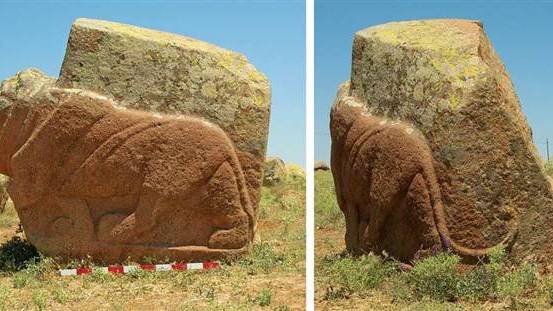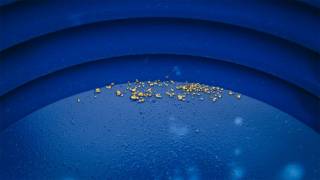Ancient life-size lion statues baffle scientists
Source: msnbc.msn.com
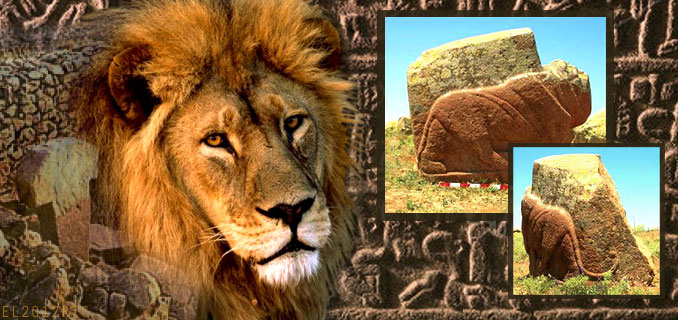
Two sculptures of life-size lions, each weighing about 5 tons in antiquity, have been discovered in what is now Turkey, with archaeologists perplexed over what the granite cats were used for.
One idea is that the statues, created between 1400 and 1200 B.C., were meant to be part of a monument for a sacred water spring, the researchers said.
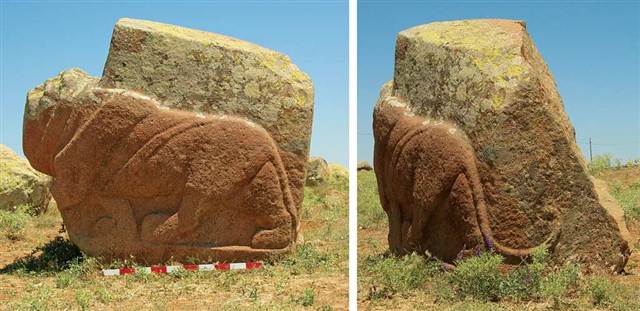
A life-size granite lion sculpture discovered in the town of Karakiz in Turkey. Dating back more than 3,200 years, to the time of the Hittite Empire, the lion is shown "prowling forward" with rippling muscles and a curved tail. In antiquity, there would have been a second lion connected to it, for a total weight of about 5 tons (10,000 pounds).
The lifelike lions were created by the Hittites who controlled a vast empire in the region at a time when the Asiatic lion roamed the foothills of Turkey.
"The lions are prowling forward, their heads slightly lowered; the tops of their heads are barely higher than the napes," write Geoffrey Summers, of the Middle East Technical University, and researcher Erol Ozen in an article published in the most recent edition of the American Journal of Archaeology.
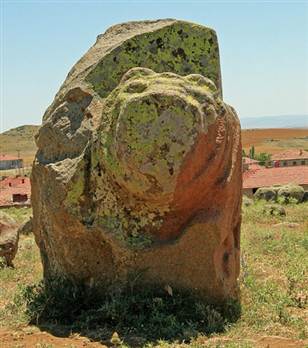 The head of the surviving Karakiz lion. It was never finished, its sculptor intending the piece to be moved and completed on location. |
"The sculptors certainly knew what lions looked like," Summers told LiveScience in an interview. He said that both archaeological and ancient written records indicate that the Asiatic lion, now extinct in Turkey, was still very much around, some even being kept by the Hittites in pits.
Curiously, the sculpture at Karakiz has an orange color caused by the oxidization of minerals in the stone. Summers said that he doesn’t believe it had this color when it was first carved.
Digging up lions
The story of the discovery of the massive lions began in 2001, when Ozen, at the time director of the Yozgat Museum, was alerted to the existence of the ancient quarry by a man from Karakiz village and an official from the Ministry of Culture. An extensive search of the area was undertaken in spring 2002, with fieldwork occurring in the following years.
Looters, however, beat the archaeologists to the catch. The Karakiz lion was found dynamited in two, likely in the mistaken belief that it contained hidden treasure. "There’s this belief that monuments like this contain treasure," said Summers, explaining that the dynamiting of monuments is a problem in Turkey. "It makes the Turkish newspapers every month or so."
The second lion, found to the northeast of the village, had also been split in two. As a result of this destruction both lion sculptures, which originally were paired with another, now mainly have one lion intact.
The danger of new looting loomed over the researchers while they went about their work. In the summer of 2008, evidence of " fresh treasure hunting " was found at the ancient quarry along with damage to a drum-shaped rock that, in antiquity, was in the process of being carved.
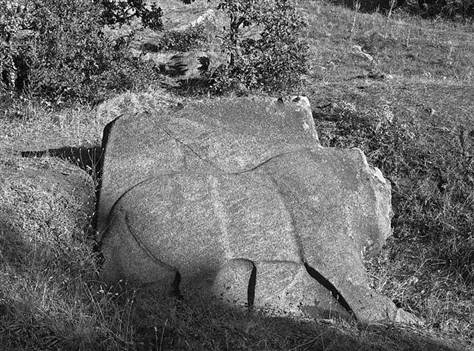
A second granite lion was found northeast of the town. There are stylistic differences between this sculpture and the one in Karakiz, although in antiquity this also was attached to a second lion.
What were they intended for?
The discovery of the massive lions, along with other pieces in the quarry, such as a large stone basin about 7 feet (2 meters) in diameter, left the archaeologists with a mystery — what were they intended for?
A search of the surrounding area revealed no evidence of a Hittite settlement dating back to the time of the statues. Also, the sheer size of the sculptures meant that the sculptors likely did not intend to move them very far.
Summers hypothesizes that, rather than being meant for a palace or a great city, the lions were being created for a monument to mark something else – water.
"I think it’s highly likely that that monument was going to be associated with one of the very copious springs that are quite close," he said in the interview. "There are good parallels for associations of Hittite sculptural traditions with water sources."
[...]
Read the full article at: msnbc.msn.com
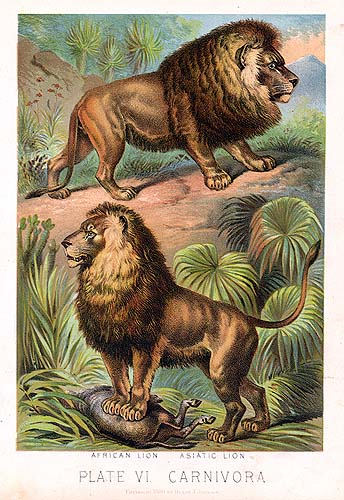
African (above) and Asiatic (below) lions, as illustrated in Johnsons Book of Nature - Wikipedia
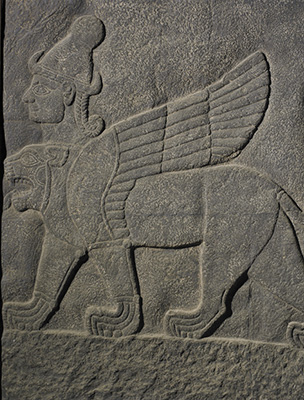
Plaster cast of a Neo-Hittite relief; human and lion headed sphinx walking left, unfinished surface of slab below; painted black in imitation of original basalt; mounted in wooden frame.
John Garstang and the Discovery of the Hittite World
Also tune into Red Ice Radio:
Robert Schoch - Hour 1 - The Mystery of the Sphinx
Neil Hague - The Age of Leo, The Awakening Sun & Galactic Changes
William Glyn-Jones - Lascaux Cave Art, Egypt’s Oldest Art, Nativity Scene Star Map & Poussin’s Shepherds of Arcadia
John Anthony West & Laird Scranton - Göbekli Tepe
Klaus Schmidt - Göbekli Tepe: The World’s Oldest Temple?
Christopher Knight & Alan Butler - Civilization One, The Moon & The Megalithic Yard
